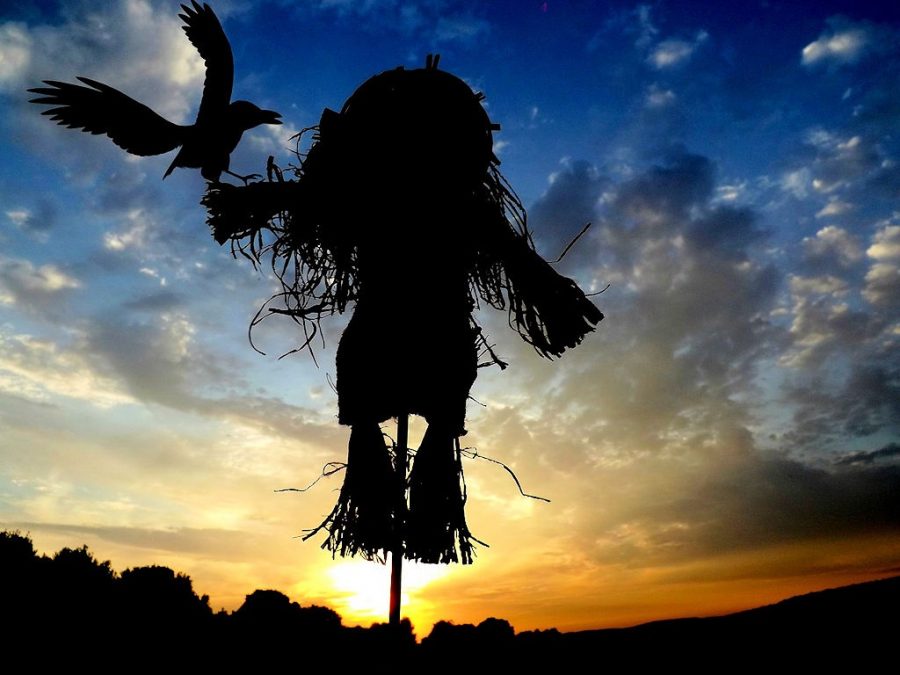In “The Wizard of Ozâ€, we may have our favorite character, but if you’re like me you can find a bit of yourself in each of them. It’s together that they fill up a complete personality, while individually they reflect the way that our energy centers (the “chakrasâ€) collaborate within our full embodiment.
So what roles do Dorothy, the Lion, the Tin Man and the Scarecrow play? Dorothy–her psychological profile less defined than the others–is a pilgrim on a journey (or is she the Prodigal Daughter trying to get back home?). The Lion is the heart. The Scarecrow is the head. And the Tin Man is the physical body. Of course, as in every Pilgrim’s Progress, at the start there is a sense of being lost, and at a loss. True to any engaging narrative, Dorothy finds herself in unfamiliar surroundings, having been swept up by a whirlwind of climate instability that lifted her and her family home off their foundations, and sent them spinning out of control.
Like all of us, the Lion yearns for courage, but he is already revealing it in the strength of his yearning; the Scarecrow is avidly searching for the very understanding that fills his contemplative days out in the cornfield; and the Tin Man only needed a drop of human kindness (along with a side of oil) in order to stride forth with purpose and a desire to be of help.
Of course, once underway, what better accompaniment to their pilgrimage than their voices raised in joyous song? And just in case we didn’t get it, their footsteps are guided by a “yellow Brick Roadâ€, that shining path that leads to their individual realizations that the truest home is found in companionship and community, and in the human heart.
After all, who needs a wizard when you have good friends?
I had breakfast yesterday with a friend whose own life journey includes a tin man on wobbly joints, a lion’s heart reverberating in full voice, and a scarecrow’s well developed intelligence—as if a reunion of the original cast of Oz had decided to meet in one body decades later. And in the time since, they have developed a new ability: to take genuine interest in how it’s going for others, such as the man–that would be me–they met for breakfast yesterday.
Over a plate of Huevos Rancheros, I was encouraged to share my current activities. So I shared an exercise, “Heart Gold Thread†which involves lifting and holding the arms to the sides at shoulder height for about ten minutes, while bringing awareness into the heart area and allowing energy to flow from the heart out through the arms.
When I illustrated the posture—checking first that I wasn’t going to upend a tray full of coffee and plates of breakfast carried by a passing waitress—he said it reminded him of the crucifixion posture. Then he added that instead of an image of suffering, it was a gesture of giving energy to the world.
And isn’t that what realized beings do, during their time with us? And their inspiring example reminds us that we too have some energy to give?
The other activity I shared was a practice I have been assigned this week in an online class, based on the book “Caring†by Tarthang Tulku. The practice is to bring three healing qualities into our negative emotional patterns: respect (and self-respect), forgiveness, and courage. Knowing about my interest in the Time, Space, Knowledge vision (TSK), also given to the world by Tarthang Tulku, my friend quickly observed: “That’s TSK.â€
Not understanding his reference, I asked him how respect, forgiveness and courage were TSK, and he answered: “Forgiveness is the past; self-respect is the present; and courage is the future.â€
Come to think of it, that’s also the message of “Wizard of Ozâ€: that in friendship and collaboration we discover who we are; and in that discovery we can learn how to forgive the past, respect our mind, heart and body in the present, and feel courage stirring within as we contemplate what awaits us in time.
Friendship is a rising tide that lifts all boats: encouraging us to ask whether our own boat is ship-worthy and whether we feel inspired to make it more so; always respecting our capacity to take hold of the tiller, forgiving ourselves for sitting idly in dry dock for so long; and then allowing the stirrings of courage to encourage us to look at all those white caps and rumors of gale-force winds, not as omens of defeat, but as a golden path into our shared future.

